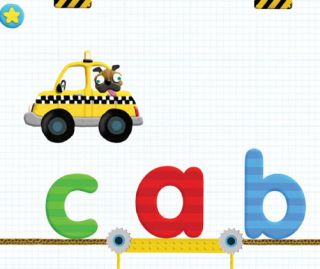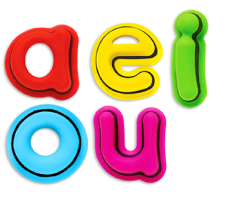Education
Vowels on the Move: Learning With Tablet Toys
To alleviate worries on how to interact, a psychomotor perspective may assist.
Posted September 15, 2015

Overuse of technology is a common and robust discussion within children’s technology research, as well as an issue filling the minds of parents who fret. What is considered too much too soon? When it comes to duration, how long is long enough? For parents, how should I interact with my child? Tablet devices are now common in many homes. Surprisingly, there are other ways to engage with these besides swiping, tapping, and clicking your way through a game or video. A psychomotor perspective may assist in alleviating parental worries of table technology interaction. Developing children may enhance some simple fine motor skills and coordination. One tactile toy has such an app interface.
In Tiggly Tales, young children can practice spelling and object recognition in an entertaining and motivating setting. Users can experiment with putting missing vowels into simple words as they bring to life what the words represent. The app connects intuitive language skills, reinforces vocabulary concepts, and introduces formal symbols by allowing users to create words while encouraging flexible thinking. Users can put handheld vowels into words, and the term comes to life either in object form or action. For example, if a user creates hen by placing e between h and n, a plump brown bird struts across the screen. You can even feed your bird lunch if you place an o between c and b, to form one yellow cob of corn. However, if an i is placed between c and b, the nonsensical word cib is bounced out of action (Tiggly, 2015).

Here are some other skills that can be cultivated through the use of Tiggly Tales, though the use of vowel manipulatives and many of these elements are pre-writing as well as fine motor skills. Some of these items can further promote learning by pairing tactile elements with visual images, promoting eye-hand coordination and visual motor integration.
• Pincer grasps work by using the thumb and index fingers. For young children, the whole hand is used to manipulate the vowel toys.
• Hand arches happen through the use of the palm when picking up the objects to place them on the on iPad. It promotes the skill of grasping objects of different sizes.
• Finger isolation happens when one finger at a time is used. Tiggly Tales allows children to drag one (or many) of the objects on the screen individually or at the same time.
• Crossing the midline involves self-awareness and the ability to get both sides of one’s body working together. Without it we could not give our friends “high-fives,” read from left to right (or right to left) or get dressed in the morning. It involves hand-eye coordination, muscular strength, and transfering brain messages. When children learn these skills, they are building new “pathways in the brain" (Welniak & Smith, n.d.). These are building blocks for complex motor skills, reading, writing, self-care tasks, and physical activities (Welniak & Smith, n.d.). Tiggly Tales promotes these skills by having users drag vowel toys from one side of the screen to the other—in effect, crossing the midline.
In addition to the above skills and the interactive learning the app creates, it also provides an optimal learning situation for engagement. A recent study found three conditions that engage children with mobile apps—sensory motor, emotional, and verbal expressions (Noorhidawati, Ghalebandi, & Hajar, 2015). By isolating some of these psychomotor skills, Tiggly Tales promotes learning through letters, sounds, and words (knowledge); letter manipulation through manipulative and on-screen actions (psychomotor); success and humor through objects and character actions (affective). Thus, in fulfilling all the optimal interaction conditions, it promotes children’s engagement with mobile apps.
In sum, Tiggly Tales is fun! Most young users will want to play it for hours on end. Keep in mind, however, that this should be a fun privilege and not an all-day activity or a replacement for reading or other supplementary educational activities (Managing Media: We Need a Plan, 2013).
Sources:
Carlson, A. G., Rowe, E., & Curby, T. W. (2013). Disentangling fine motor skills’ relations to academic achievement: the relative contributions of visual-spatial integration and visual-motor coordination. The Journal of Genetic Psychology, 174(5), 514–533.
Managing Media: We Need a Plan (2013). Retrieved June 9, 2015, from https://www.aap.org/en-us/about-the-aap/aap-press-room/pages/managing-m…
Noorhidawati, A., Ghalebandi, S. G., & Hajar, R. S. (2015). How do young children engage with mobile apps? Cognitive, psychomotor, and affective perspective. Computers & Education, 87, 385–395.
Tiggly. (2015). Tiggy Chef (Version 1.0) [Mobile application software]. Retrieved from https://www.tiggly.com
Welniak, S., & Smith, H. (n.d.). Crossing Midline: The Imaginary Line Between Right and Left. Retrieved September 14, 2015, from http://ptcne.org/crossing-midline-the-imaginary-line-between-right-and-…
Acknowledgements:
The author would like to acknowledge Julia Dachs for her help in gathering information about mobile applications and psychomotor learning for preschool children.




